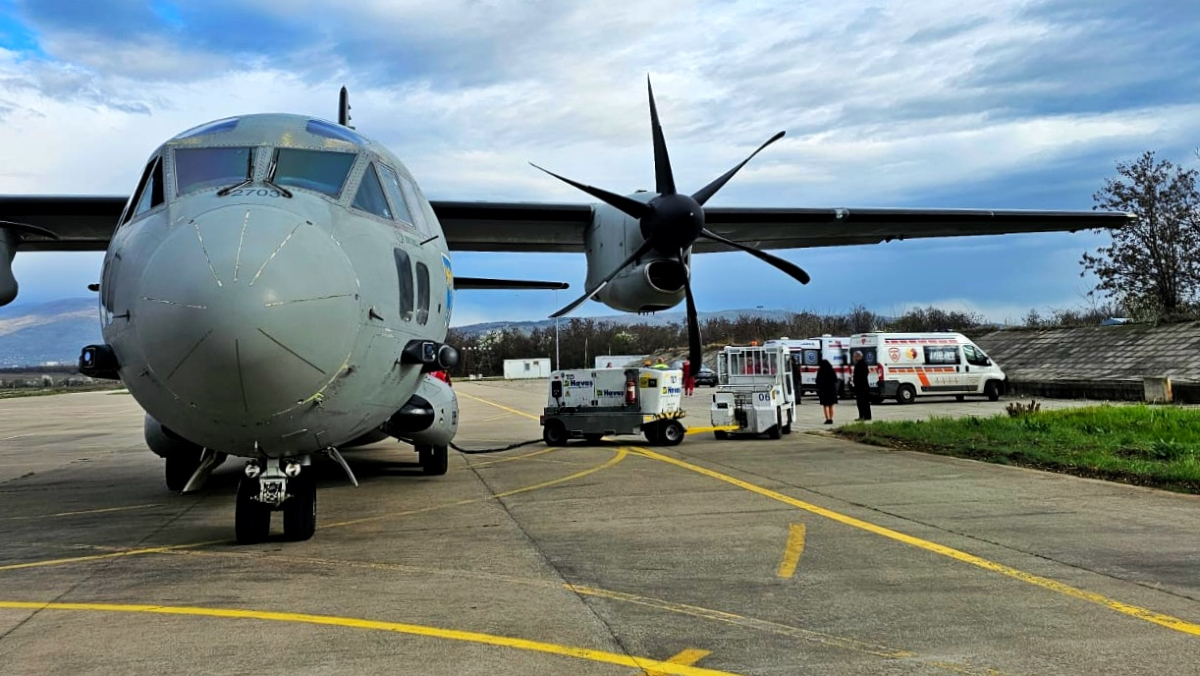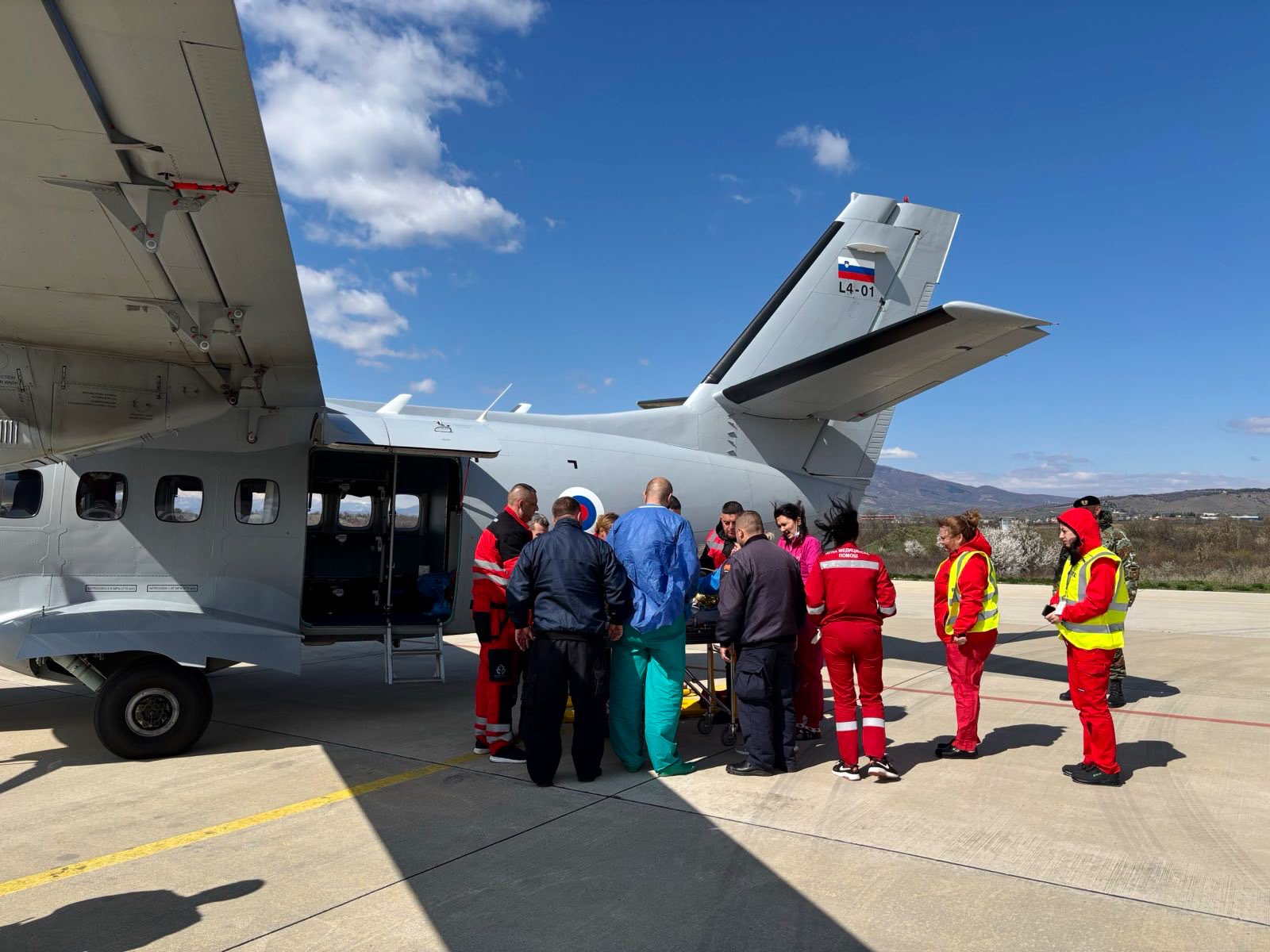
Following the fire in the Puls nightclub in Kočani, North Macedonia, on 16 March, which claimed the lives of 59 people and left more than 150 severely injured—most of them young—the EU Civil Protection Mechanism played a crucial role in evacuating burn patients to medical centres across Europe. Emergency services from Luxembourg and Hungary facilitated the transfer of patients to Croatia, Greece, Romania, Slovenia, Sweden, Lithuania, Hungary, Luxembourg, and Norway, all of which offered assistance through the Mechanism. The European Commission has stated that it remains available to support the authorities in North Macedonia.
“Without the EU’s assistance, we would not have been able to provide medical care for so many injured people so quickly. Ambulances and a military aircraft from Bulgaria arrived immediately to transport the most critical patients, followed by support from Greece and Serbia. A day or two later, other countries joined in, airlifting patients to Spain, Norway, and Portugal. The EU Mechanism is extremely important, especially for small countries like ours, as we lack the capacity to build our own systems for crisis situations such as fires, earthquakes, and floods. The support system established by the EU is of great significance to all of us,” said Goran Lefkov, a journalist from Kočani whose granddaughter perished in the fire.
The Crisis Management Centre in North Macedonia explained that the call for assistance was issued by the Crisis Headquarters, established by the Ministry of Health and the Operational Centre of the Ministry of Interior. North Macedonia’s Minister of Health, Arben Taravari, reported that 101 patients are receiving treatment abroad.
The EU Civil Protection Mechanism, established in October 2021, aims to strengthen cooperation between the civil protection services of EU member states and ten non-EU countries, enhancing disaster prevention and response efforts. The Emergency Response Coordination Centre (ERCC) operates 24/7, monitoring global events and ensuring rapid deployment of aid through direct communication with national civil protection authorities.
Now, any country affected by a disaster—whether in Europe or beyond—as well as the United Nations, can request emergency assistance through the Mechanism. The European Commission coordinates the response, enabling affected countries to communicate via a single contact point rather than multiple channels. This approach consolidates expertise and resources, prevents duplication of aid efforts, and ensures an efficient response.
In addition to EU countries, the EU Civil Protection Mechanism includes Albania, Bosnia and Herzegovina, Iceland, Moldova, Montenegro, North Macedonia, Norway, Serbia, Turkey, and Ukraine. However, its reach extends far beyond this group. In March 2025, the EU announced an urgent €1.2 million intervention in Uganda to help the World Health Organization (WHO) manage the Ebola outbreak through coordination, surveillance, infection prevention and control, case management, operational support, and logistics.

The Mechanism also facilitates disaster prevention and preparedness coordination among national authorities, promoting the exchange of best practices and the development of higher common standards. This enables emergency teams from different countries to understand various approaches and collaborate effectively in times of crisis.
“My granddaughter was 16 years old and a student at a medical high school. She was a wonderful person who dreamed of becoming a doctor. Our family will never be the same again—nor will the families of others who lost loved ones in this tragedy. In addition, dozens of our children are still undergoing treatment, and the cost of treating a burn patient ranges between €150,000 and €200,000. These are enormous expenses, not to mention the irreplaceable lives that have been lost,” said Lefkov.
Since 2001, the EU Civil Protection Mechanism has been activated more than 770 times in response to emergencies, including 58 times in 2024 alone. It has provided aid to victims of the war in Ukraine, conflicts in the Middle East, and floods in France and the Czech Republic, among other crises. In 2024, the Mechanism also facilitated the evacuation of approximately 1,400 Europeans from conflict zones, and by January 2025, it had enabled the evacuation of more than 4,000 patients for medical treatment.
The EU Civil Protection Mechanism, established in October 2021, aims to strengthen cooperation between the civil protection services of EU member states and ten non-EU countries, enhancing disaster prevention and response efforts. The Emergency Response Coordination Centre (ERCC) operates 24/7, monitoring global events and ensuring rapid deployment of aid through direct communication with national civil protection authorities.
Now, any country affected by a disaster—whether in Europe or beyond—as well as the United Nations, can request emergency assistance through the Mechanism. The European Commission coordinates the response, enabling affected countries to communicate via a single contact point rather than multiple channels. This approach consolidates expertise and resources, prevents duplication of aid efforts, and ensures an efficient response.
In addition to EU countries, the EU Civil Protection Mechanism includes Albania, Bosnia and Herzegovina, Iceland, Moldova, Montenegro, North Macedonia, Norway, Serbia, Turkey, and Ukraine. However, its reach extends far beyond this group. In March 2025, the EU announced an urgent €1.2 million intervention in Uganda to help the World Health Organization (WHO) manage the Ebola outbreak through coordination, surveillance, infection prevention and control, case management, operational support, and logistics.

The Mechanism also facilitates disaster prevention and preparedness coordination among national authorities, promoting the exchange of best practices and the development of higher common standards. This enables emergency teams from different countries to understand various approaches and collaborate effectively in times of crisis.
“My granddaughter was 16 years old and a student at a medical high school. She was a wonderful person who dreamed of becoming a doctor. Our family will never be the same again—nor will the families of others who lost loved ones in this tragedy. In addition, dozens of our children are still undergoing treatment, and the cost of treating a burn patient ranges between €150,000 and €200,000. These are enormous expenses, not to mention the irreplaceable lives that have been lost,” said Lefkov.
Since 2001, the EU Civil Protection Mechanism has been activated more than 770 times in response to emergencies, including 58 times in 2024 alone. It has provided aid to victims of the war in Ukraine, conflicts in the Middle East, and floods in France and the Czech Republic, among other crises. In 2024, the Mechanism also facilitated the evacuation of approximately 1,400 Europeans from conflict zones, and by January 2025, it had enabled the evacuation of more than 4,000 patients for medical treatment.
Please wait while your video is being uploaded...
Don't close this window!